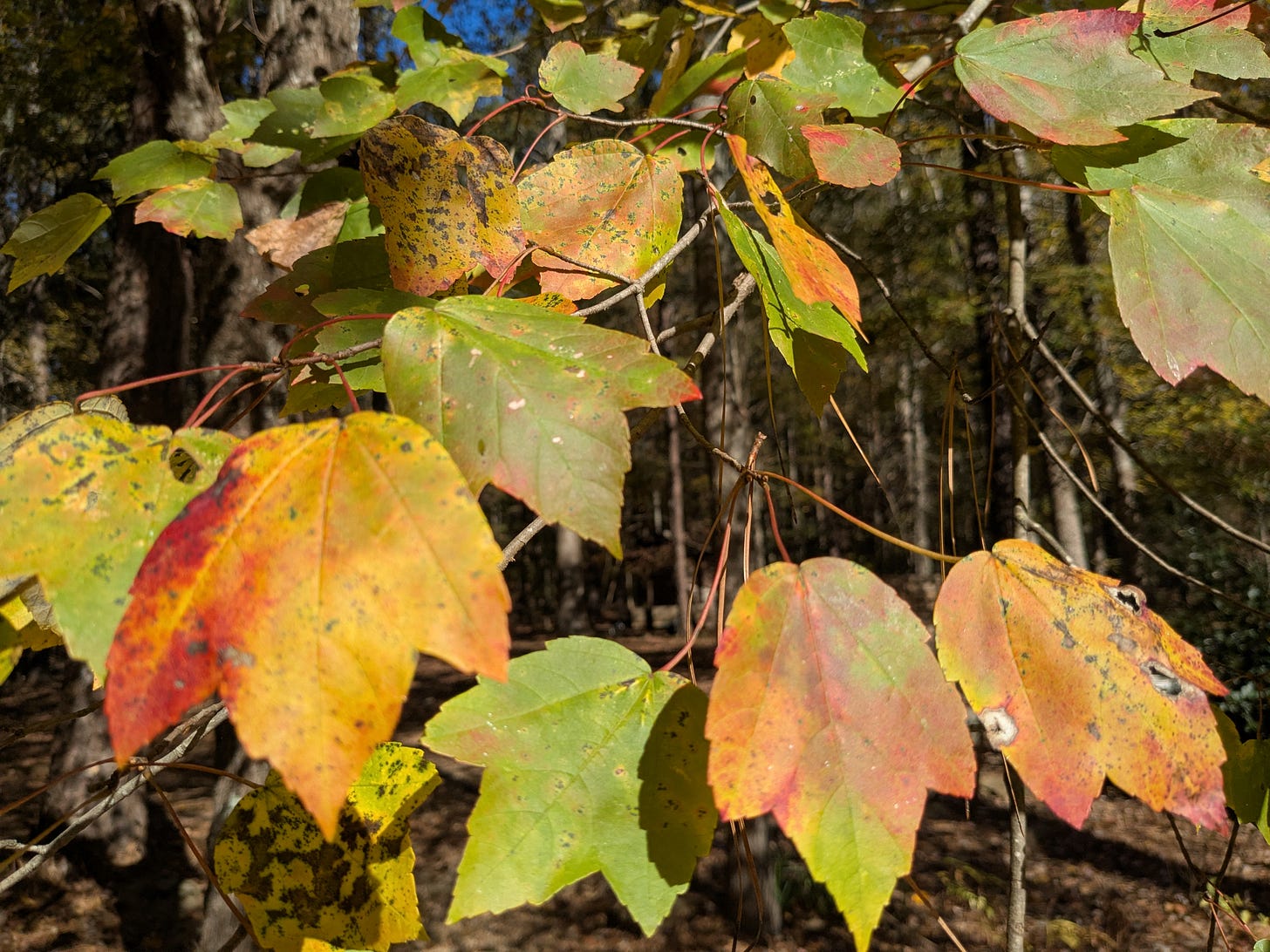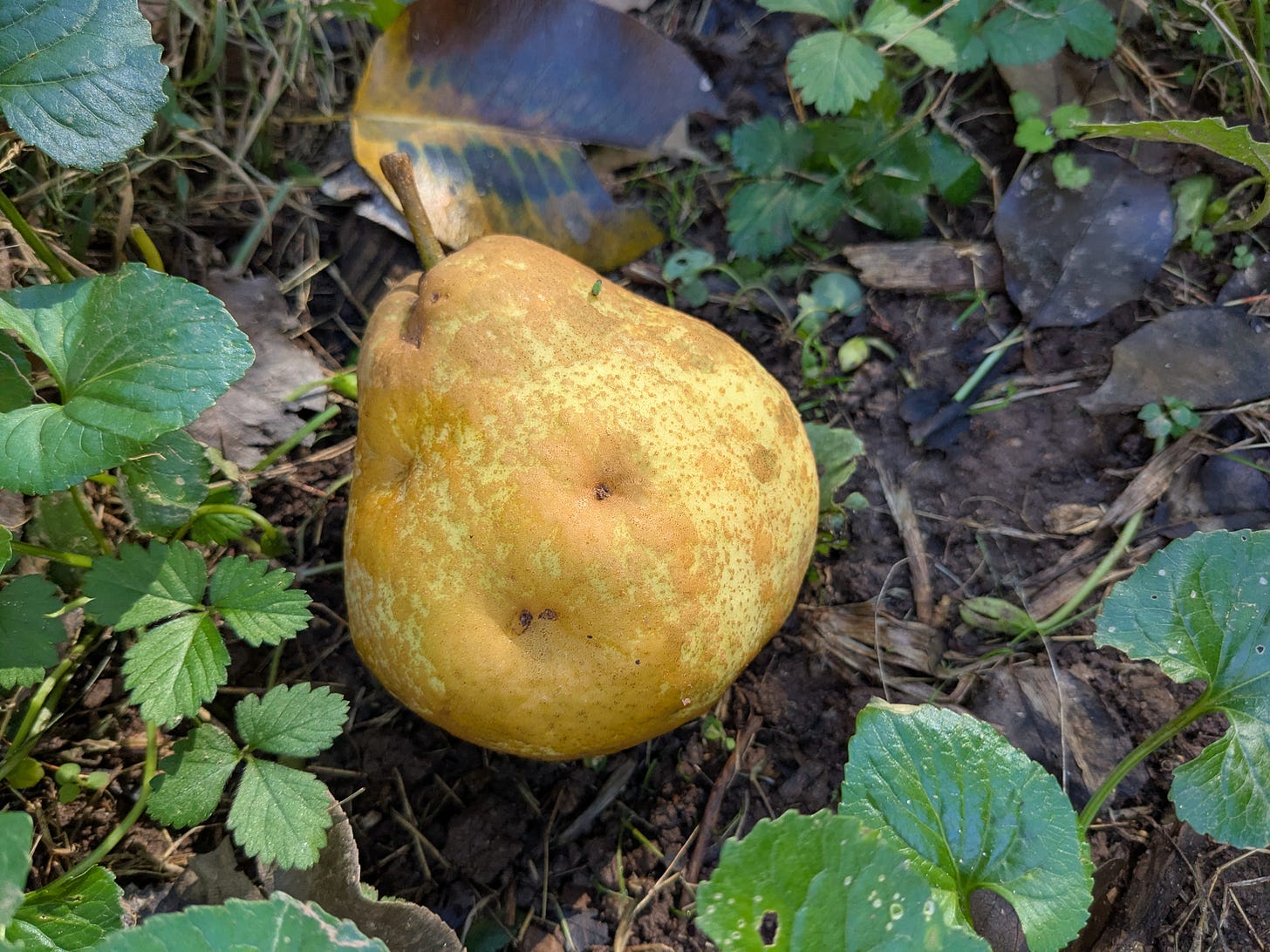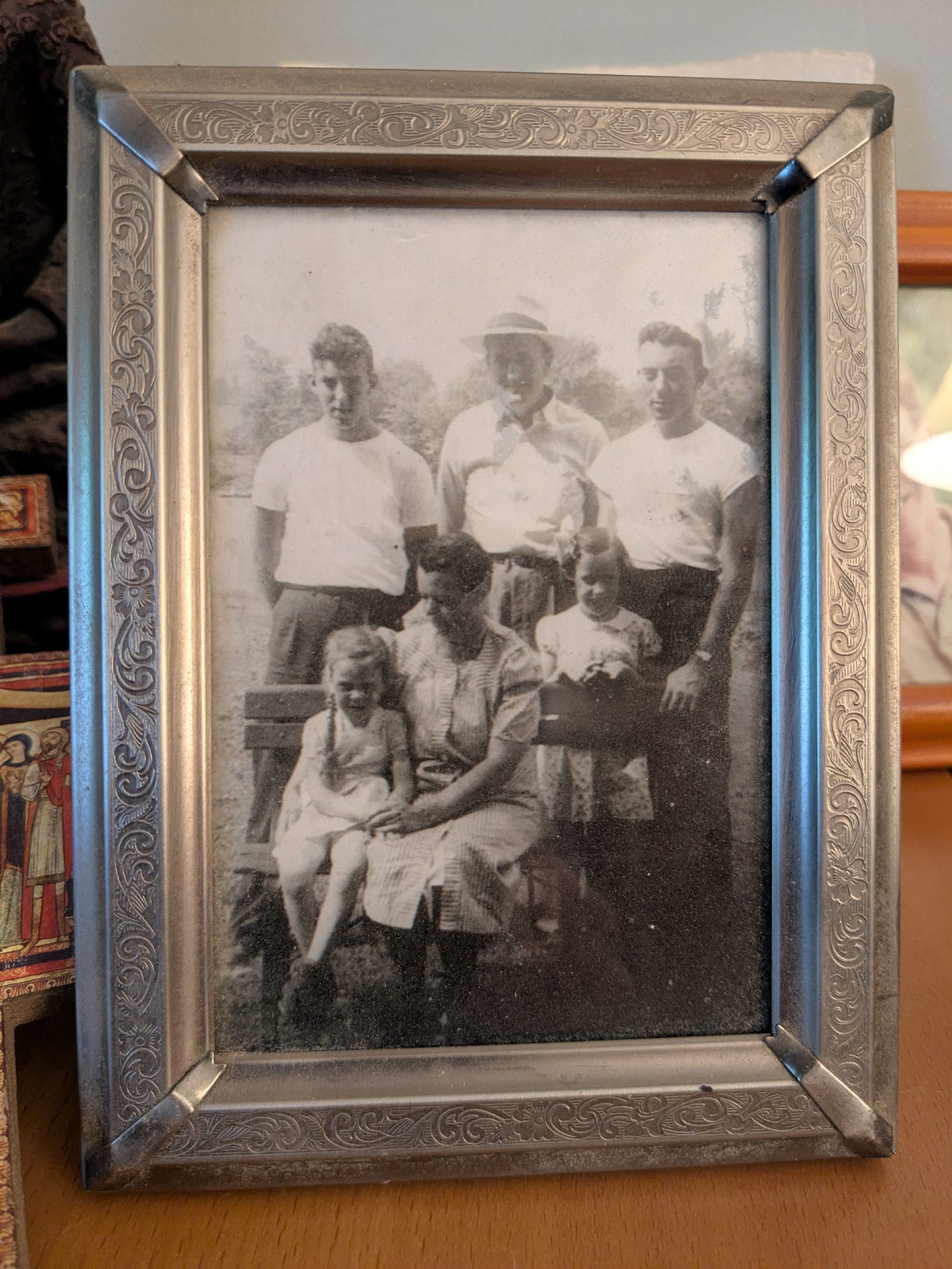All-Saints
The Fullness of Time
Each season is but an infinitesimal point. It no sooner comes than it is gone. It has no duration. It simply gives a tone & hue to my thought. Each annual phenomenon is a reminiscence & prompting.
– Thoreau, Journal, June 6, 1857
As explored beautifully in Kristen Case’s new book Henry David Thoreau’s Kalendar, near the end of his life, Thoreau began to collate, in a kind of proto-spreadsheet, the phenology of his hometown: the bloom times and bird migrations and dates for leaf fall that he had meticulously kept for years in his journal. His Kalendar tracked not just weather-related phenomena, she notes, “but also the hidden relations between them—between the skies of June and skies of past and future Junes—relations we often feel but can’t quite hold, stuck as we usually are in our own brief moment of linear time.” In this practice, Thoreau began to craft a kind of ecology, thinking in terms of nature’s complex interactions over time in his contemporary version of the wheel of the year.
The Celtic festival Samhain, the precursor of All Saints day, marks the midpoint between the autumn equinox and the winter solstice, a fixed point in the cycle of the earth around the sun. In my temporal imagination, Samhain is both a season and a moment, both wonderfully now and ancient, and it suggests relations in the more-than-human world and in my soul. We have already celebrated All Saints Day at our church, but the season hangs on in my heart. The tone and hue of All Saints for me stretches in all directions. The farm now lingers in this liminal time. The poplars are mostly bare, the sweetgums, maples, dogwoods, and sourwoods have embraced their true colors, but the oaks, hickories, and beeches are reluctant to let their summer green go. Me, too. The opulent leaves of the figs now blanket the soil beneath them.
The garden’s season was fully represented in our homely All Saints feast. We ate the very last of our zipper cream peas, great lovers of the Georgia heat now letting go of life, and the very first of our sweet potatoes, their abundance hidden till the November digging. The beautiful deep green of our fall crop of kale graced our white plates as well. Planted in the heat of summer, kale thrives now in the cooler days. The fall honey harvest, product of 10,000 blooms of asters and goldenrod in the gloriously sunny days of September, sweetened our soul cakes, the predecessor of today’s (much degraded, in my humble opinion) Halloween candy. Soul cakes were All Saints gifts offered in appreciation for prayers for the dead, a tradition we are happy to repeat in our own way. We ate them by the fire, the best gift of our generous neighbor’s oak trees, burning last season’s sunshine as we remembered our ancestors. We raised a glass of mead to honor them, the first of our latest brew, as our bees wax candles lit our altar of family pictures.
Season: Meaning One
The word “season” carries with it the stories suggested by the etymology of the word. Ultimately, our “season” derives from the Latin “to sow,” and thus it suggests both the broader sense of time—the seasons of the year—and the very particular, the moment when the conditions are right for sowing. In Spring, we have moments when temperature, moisture, and length of day all conspire to inspire germination. For my agrarian forebears, the time of planting was a cause for celebration as it is for me, the true renewal of hope for a harvest, for a coming season of abundance after a long winter. In the Celtic wheel of the year, we celebrate Imbolc in February as the promise of the coming of the season of planting with a blessing of the seeds. In that moment, we anticipate the spring equinox when we will begin planting the summer garden here in the Georgia Piedmont. Though we stretch the season with indoor seed starting and a small greenhouse, we are still fundamentally at the mercy of soil temperature and sunlight. And with every seed I plant, I imagine the fruit that is promised. The lexicographers tell us that “sow” and “seed” are ancient cousins with no predecessors and with cognates in most northern European countries; they, you might say, have always been part of our language, part of our culture. They define us as a species, we now having been about the business of sowing seed for 10,000 years. Little wonder sowing seeds defines our seasons.
Season: Meaning Two
Even as there is a particular time to sow, there is also a season of harvest, and each fruit telegraphs its perfect ripeness in its own way. You might call this the kairos of gardening, the fullness of time. Blueberries bulge when at perfect ripeness. Tomatoes wear green for all but their last days and show their final beauty gradually. Once fully in their glory, they still require a day of ripening in a kitchen window. Cantaloupes are most generous in letting us know they are ready to be picked, for the fruit pulls away from the stem. Watermelons require a percussionist’s ear as the right thump is the best clue. Figs at their finest will be moments away from ferment, and the bees will let you know that they are ready to pick.
There is, however, a second kind of harvest required not by the ripeness of the fruit, but by the fullness of the season. A blustery afternoon yesterday ushered in the first cold air of the season to reach the Georgia Piedmont. We will have a hard freeze tonight. Thus, Samhain marks the death of the summer garden. I have encouraged the tomatoes to persist through to the fall, and we have many of various sizes, though still green. I will pickle them, a tradition passed down to me from my brother’s father-in-law. Our tromboncino squash have fed us throughout the summer, and we have one last bountiful harvest, enough to share with the neighbors, a summer treat in November. There are a few bell peppers and plenty of habaneros that will join the tomatoes in pickling. I have potted up and moved to the greenhouse one of the pepper plants, for it has come too far to let go of now. Finally, I shook the branches of the pear tree and gathered the remnant fruit. Having picked tomatoes, peppers, okra, squash, and pears for the last time this year and having stuffed all the plants we cannot bear to lose into the greenhouse, we are ready for the cold. There is a kind of grieving in this work, a last goodbye to plants I have greeted every morning since April, some since January. Marking the death of the summer garden is melancholy for me. I know I will wake to a very different place.
The rest of the farm has been preparing for this moment for some time. With short days and thus short time for foraging, the chickens have all but stopped laying for the season. The honey bees have long since stored their winter food, some of which they have shared with us, and have stopped rearing new bees. They will huddle together through the winter until Imbolc when they too will claim the promise of Spring and start their increase for the nectar flow. Our Great Pyrenees guardian dogs have put on their winter coats and are most ready to welcome the cold.
Season: Meaning Three
Salt seems distant from this discussion of planting and harvest save for the savoring of the later. But if we consider seasoning as bringing our food to its fullness, then this use of “season” makes sense. Salt ripens the flavors, bringing them to completion. Perhaps this is true of our souls too, as Jesus would have us be salt and bring the world to its fullness. Perhaps this writing needs a touch of salt as well.
At its simplest, an altar is a table, a placeholder for the sacred. Our All Saints altar held a black-and-white photo of my father’s family when he was in high school. My grandmother sits between my two aunts, both some years younger than my father and his older brother. My grandfather, his eyes shaded by a straw hat, stands between his two sons, behind his wife and daughters. My grandmother’s arm is around her youngest, her head bowed toward her.
I never knew my grandfather or my uncle. Both died the year before I was born, my uncle just a few months before. I lingered with this loss as we sat before the All Saints fire. I am well acquainted with grief at this point in my life, my parents and siblings having gone on before me. I can only imagine that my birth was a marker of hope in a terrible season of grief, a bit of light in a very dark night. I wonder now if I was also a reminder of that loss, of the grief my father and his family carried. I know my father loved and admired his older brother, as I do mine; I am reminded of this loss almost daily.
Just before All Saints this year, we received the happy news that my brother’s younger son’s wife had given birth to a beautiful girl, the latest Balthazor to enter this world. We celebrate that birth even as we wish that her grandfather were still with us to join in the celebration. Similarly, as we enter the dark time of year, my heart and mind turn to seeds and the expectation of the beautiful green of germinating plants.
Let Me Know Your Thoughts
Please Share your All Saints/Samhain reflections. I’d love to hear from you.
On Life in the Garden
As the prophet Aldo Leopold says, “There are two spiritual dangers in not owning a farm. One is the danger of supposing that breakfast comes from the grocery, and the other that heat comes from the furnace.”
I have always known, as if born to it, as if I had germinated in the warmth of a spring day in the damp soil, that however the bills were paid, however I managed the business of money, my life’s meaning and truth would be found in the garden.
My writing offers insights on the life I find in the garden and celebrates the glories of the natural world as I work toward an ever greener mind. I hope you will subscribe.
The Community of a Fig Tree
On that day, says the Lord of hosts, you shall invite each other to come under your vine and fig tree.”
-- Zechariah 3:9-10
On a hot summer day in August of 2020, the figs on our farm, in riotous abundance, called me and many of the more than human world to enjoy the bounty. Sitting under the shade offered by the luscious leaves, I fell into a reverie at least in part inspired by the heat, the fermenting figs, and the buzz of 10,000 honey bees. My reflection on this reverie became the first chapter of A Book of Season, which will be published by Mercer University Press in May of 2026. Watch this Substack for information on how to order.






